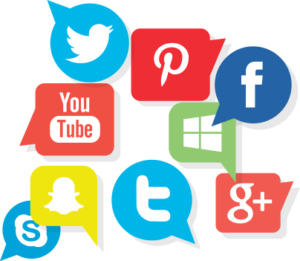The use of social media tools to improve the flow of information within the organization
Custom Essay Writing Service You Can Trust
WE WRITE ESSAYS FOR STUDENTS
Tell us about your assignment and we will find the best writer for your paper.
Write My Essay For Me| Rank | Website | Students’ Rating | Info | |
|---|---|---|---|---|
 |
GlobalEssayWriters.com
 |
Quality: 10
Price: 9.9
Delivery: 10
|
Read Reviews | |
 |
NursingEssayHub.com |
Quality: 9.9
Price: 9.8
Delivery: 10
|
Read Reviews | |
 |
ApprovedScholars.com |
Quality: 9.9
Price: 9.8
Delivery: 9.8
|
Read Reviews | |
Executive summary
This paper discusses how various social media tools facilitate the flow of information within organisations. This entails not only organisation’s internal communication but also communication with clients. The paper identifies that in the current revolutionized world; social media tools have become integrated into our communication and have massively contributed in the rate of information flow.
Technology and media are virtually believed to have taken the world by storm over the past ten years. As social media, platforms become increasingly dominant, firms and organisations have adequately adopted them.
Use of Facebook, Twitter, WhatsApp and Instagram among other social media platforms is not uncommon to organisations and the number of users is staggering. It is recorded that there are now 284 million Twitter monthly users and 332 million users of LinkedIn (James, 2012).
In addition, Facebook and YouTube have reached one billion marks in a month (James, 2012). Many companies are using internal social media platforms to enhance customer relations. Although challenges may still arise, organisations still thrive with the initiative.
Use of these tools reduces the time an organisation would need to navigate in changing programs and deliver a more positive experience from the clients’ perspective.
Social media has found great application in the transportation and logistics sector. For instance, Uber taxi drivers who use technology in which the client communicates directly with the driver through an application installed in android or windows Companies such as Best Buy and Dell have successfully used social media tools to increase revenues and stimulate innovation. A survey, however, indicates that many companies have avoided or stayed away from social media possibly due to the internal view of failure of beneficial results arising from their use.
By 2010, only 50 percent of 1,060 global executives indicated integration of public social network initiatives to run organisations. In fact, 60 percent highlighted positive impacts of social media within the companies’ internal communications.
A similar dichotomy was found in qualitative research on 34 companies (James, 2012). The paper concludes by identifying that social media and technology have been integrated in the way people communicate and could be viewed as a real-time face-to-face conversation.

Introduction
Communication is a fundamental tool in any organization regardless of the size. Relay of information among various departments and personnel cannot be overlooked. Therefore, efficient flow of information within an organisation is essential to the organisation. It is convincing enough to say that the current world has repeatedly been distracted by technology. It has become a trend for friends and family members to video chat and text each other on smartphones and tablets even from different rooms of the same house.
While it seems distractive as previously suggested, this is a ploy to sell more technology and an opportunity to reach to people effectively. Although fear might arise amongst the general population that this risks to immersing the people in the digital world, which may not be equivalent to the real world, it is still an inevitable progress.
William Powers once expressed that a weekly detox from the internet provided a feeling of not knowing oneself when the internet is gone but later realized how much it was contributing to our learning few months later (Weinberg et al. 2013).
Concerns have even been raised regarding the overuse of social media tools in communication within organisations, so much. Some restaurants in Los Angeles have banned use of smartphones by customers during meals, probably to ensure they enjoyed company as well as meals (Turkle, 2012)
Organisations must highlight their particularities before employing these social media tools in communication to allow effective information flow.
It is imperative to understand that the hypermedia represents applications that are internet based fundamentally relying on ideas and principles of content creating and sharing usingWeb 2.0 (Herring, 2015).
The tools highly focus on online communication channels supplied by network providers. The current breakthrough in the use of technical applications and social media has created a wide range of opportunities for experts in public relations.
Thus, information can reach to increasingly more audiences in a much shorter time compared to technical face-to-face conversations. The Internet is thus a pool for the flow of information within and among organisations. A study carried out in 2013 reveals that more than 50 percent of companies across the world use technology and social media tools in internal communication (Weinberg et al. 2013).
Therefore, there is a tremendous increase and support of a good working relationship. A recent study by James 2012 shows that international organizations use social media also known as enterprise 2.0 within the organisation to communicate to employees and customers (James, 2012).
A graphic showing the most commonly used social media platforms

Previous Approaches
Prior to the evolution of technology, that is, before social media took over in business and organisations, communication between employer and employees as well as clients and customers was particularly a challenge (Geho & Dangelo, 2012). Think of a taxi driver packing his car in the middle of a city like New York waiting for any customer without any connection and communication between the two.
It is a gruelling experience. It would also be difficult for the owner of a fleet of such cabs to manage his business from a central location. A part-time solution that was previously employed is displaying phone numbers of the drivers so that riders could request for a ride by making a phone call. Connecting to many customers is a challenge with such information flow.
Recently transit agencies have integrated new platforms of technology during internal communication and communicating to their customers or clients. The reason for this may vary, but the common goals include communicating with current riders as well as reaching out to new potential customers, enhancing cohesion in the community and creating a strong brand.
Upcoming transit organizations are also using social media applications such as google+ to support customer service, obtain and respond to customer feedbacks directly on these applications. With billions of people having access to and using social networks today, it is evidently forging an important era in the expansion of business creating a communication system that enables instant customer feedback.
In addition, the transportation and logistics sector need a strategic application of technology in response to the tremendous revolution and competition in the sector (Gal-Tzur et al. 2014).This is important to create efficiency and adequate connection with clients and partners. This bridge connecting the parties in this sector is almost automated. Just like the social media, the transport and logistics industry requires a mobile network to function.
Social media has found great application in the transportation sector. These applications guide their users to find the best route between particular points as well as locating their drivers who navigate them through cities. In Canada, intriguing statistics rank social media third where most time is spent (26%) with home and workplace leading. (Scott, 2012).
If you take an example of the taxi business, every taxi business owners’ aim is to promote their operations to a higher level by having more customers and providing efficient and reliable services to their clients. Transport agencies need to connect to more people every day to achieve this goal. In the current digital world, the audience can be reached using such social platforms as Facebook, google+ and twitter. In addition, it is arguably the best place you can advertise your products.
Transport based companies need to develop a direct connection with their customers. Social media, therefore, becomes a great channel for bridging the parties. Take, for instance, Uber- taxi drivers who use technology in which the client communicates directly with the driver through an application installed in android or windows.
A nearby driver partner accepts your request for the ride. As a result, locally licensed private hire drivers can engage in the business effectively and with ease. The customer is also able to request for transport services at the click of the screen.
Riders are also able to share their trip with friends using the app. The technology enables the recipient to view live trip, the driver’s details such as photograph and mobile phone number (Bal et al. 2015). As a rider, you will feel safer through the trip as will be the driver. Uber service has so far reached 200 cities across 55 countries in all continents. The business generated $10 billion in revenue in 2015. Uber connects the traveller and the taxi driver and gets a percentage of the fare.
The tool is also a form of marketing as riders share the application by sending the download link via various social network sites including snapchat, Gmail, Twitter and messenger among others thereby creating an extension to potential new customers.
After each ride, the application allows the rider to rate the trip using the five stars and provide any relevant feedback. This allows the business to maintain high standards and compete favourably in the market. By so doing, Uber technology is a tool used as an extension of the highly invested business plan to create an outstanding organisation.
In the recent future, we expect to see more utilisation of interactive multimedia systems integrated into Uber app. In addition, updates such as heavy traffic on certain routes will be helpful to drivers. For example in Turin, Italy, an effective traffic prediction tool is used to control traffic impressively and smoothly (Bal et al. 2015).
Logistics always provide new technology for optimal operation. With such social media tools, it is an opportunity to take the business to another level. In coming up with decisions on which social media platform to use, it is necessary to understand how the clients and employees are engaging and interacting through internet.
It is prudent to have information on whether your clients regularly use these platforms. Pew Research Centre surveys for the years 2005-2006 and 2008-2015 indicates the following: Young adults from teenagers to thirty yearswill always use these network apps with 90 percent fully obsessed with social media.
The elderly are quickly catching up and their number has tripled in the past six years. In 2015, 35 percent of population above 64 years were well oriented with hypermedia. (Herring, 2015). However, considering every aspect, social network cannot be overlooked in valuable components of information flow.
New Findings
Despite the breakthrough in the integration of technology to facilitate smooth flow of information in transport, particularly taxi business, more still needs to be done to reach to more customers and reach to more classes of people in terms of age and social classes.
For example, use of short text message codes needs to be employed to reach the age group such as elderly who are rarely communicating through online network. In addition, security can be improved by installing detectors of firearms in the taxis to ensure safety to the driver and the riders.
Use of videos to advertise the business has also not been exploited yet it is also a great way of communicating to bonafides of the organisation. It is a means of face-to-face communication. It provides a direct way of orienting prospective customers to the product. (Bal et al. 2015). In early 2016, Uber had recruited robotic drivers to replace human drivers. Although the initiative may look reckless and audacious, it would be a significant scientific evolution in the industry.
Recently, Facebook has announced a new feature in the Messenger extension app that allows its users to transfer money to one another using debit cards. This will facilitate instant payment of fare, therefore, avoiding complicated communication process. The problem of choosing the size of the car to request for a ride especially when you are many has been solved.
Safaricom little cabs application allows the rider to give such additional information. This provides adequate information flow between the engaging parties. Social media tools have become a one-stop shop for socializing and transportation.
Conclusion
From the content of this paper, it is evident that social media is a core tool for organisations to pass information by allowing every party to engage and therefore deliver appropriately. These network applications market the brand and organisation around the globe. The target audience is reached easily on the technology platforms. It therefore creates a back and forth dialogue with mass audiences.
It offers a direct conversation with customers and new users of the product. It is however important to note that the informal interactive nature of these platforms may be a challenge or even a risk to organisational communications due to difficulty in controlling the content and the conversing parties.
This may risk the image of an organisation by creating a negative publicity. However, this can be prevented by formalizing the rules governing sharing content via network by employees. Nonetheless, mobile networking has taken communication flow within organisations to a level we cannot overemphasize.
Related:
The use of social media tools to improve the flow of information within the organization
Let our team of professional writers take care of your essays for you! We provide quality and plagiarism free academic papers written from scratch. Sit back, relax, and leave the writing to us! Meet some of our best research paper writing experts. We obey strict privacy policies to secure every byte of information between you and us.
ORDER ORIGINAL ANSWERS WRITTEN FROM SCRATCH



